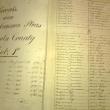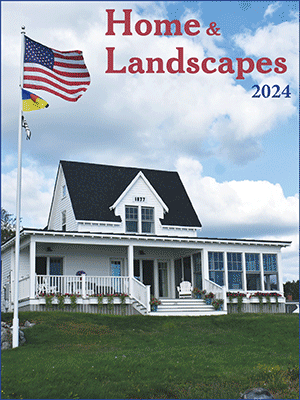Lincoln County’s ‘attic’
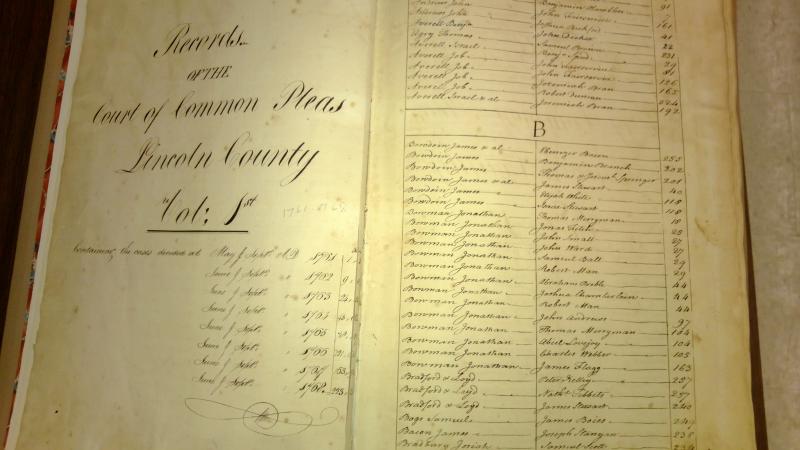 Register of the Court of Common Pleas, 1761–1768. The county was formed in 1761. JANE CARPENTER/Wiscasset Newspaper
Register of the Court of Common Pleas, 1761–1768. The county was formed in 1761. JANE CARPENTER/Wiscasset Newspaper
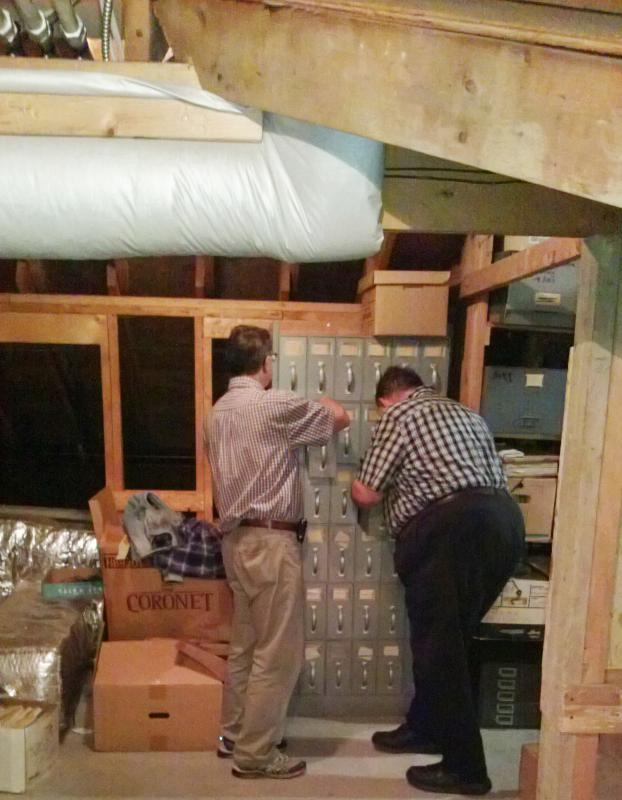 Jim Hopler, left and Jay Robbins examine documents in the courthouse attic. JANE CARPENTER/Wiscasset Newspaper
Jim Hopler, left and Jay Robbins examine documents in the courthouse attic. JANE CARPENTER/Wiscasset Newspaper
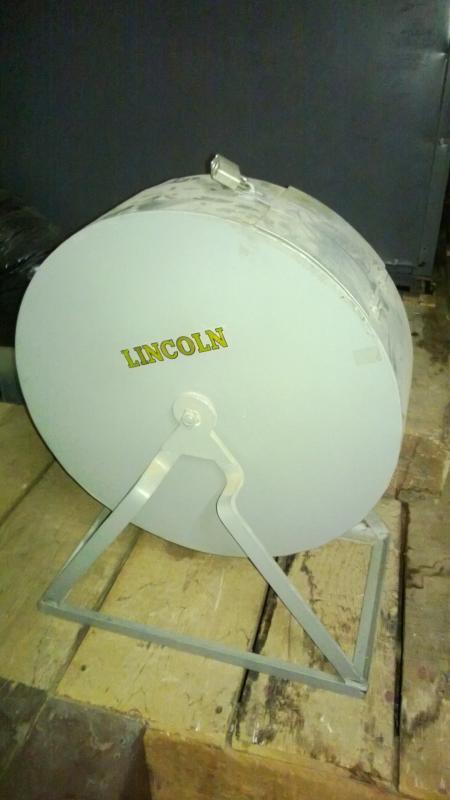 Jurors were selected by spinning this wheel and drawing names out of the container (circa 1940s). JANE CARPENTER/Wiscasset Newspaper
Jurors were selected by spinning this wheel and drawing names out of the container (circa 1940s). JANE CARPENTER/Wiscasset Newspaper
 Campaign buttons for Gov. Reed (1959-67). JANE CARPENTER/Wiscasset Newspaper
Campaign buttons for Gov. Reed (1959-67). JANE CARPENTER/Wiscasset Newspaper
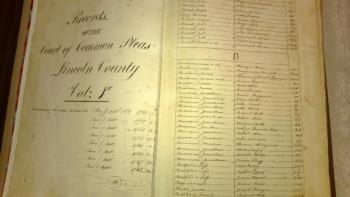 Register of the Court of Common Pleas, 1761–1768. The county was formed in 1761. JANE CARPENTER/Wiscasset Newspaper
Register of the Court of Common Pleas, 1761–1768. The county was formed in 1761. JANE CARPENTER/Wiscasset Newspaper
 Jim Hopler, left and Jay Robbins examine documents in the courthouse attic. JANE CARPENTER/Wiscasset Newspaper
Jim Hopler, left and Jay Robbins examine documents in the courthouse attic. JANE CARPENTER/Wiscasset Newspaper
 Jurors were selected by spinning this wheel and drawing names out of the container (circa 1940s). JANE CARPENTER/Wiscasset Newspaper
Jurors were selected by spinning this wheel and drawing names out of the container (circa 1940s). JANE CARPENTER/Wiscasset Newspaper
 Campaign buttons for Gov. Reed (1959-67). JANE CARPENTER/Wiscasset Newspaper
Campaign buttons for Gov. Reed (1959-67). JANE CARPENTER/Wiscasset Newspaper
A trip into the attic of a family home is often poignant, full of objects that remind us of the generations that have gone before. Imagine the attic of a building that holds items that reflect 200 years in the life of a county.
Lincoln County Courthouse, the oldest New England courthouse still in use, was built in 1824, just four years after Maine became a state. But actual county records go back much further — to 1761.
Jay Robbins of Robbins Historical Research, Inc. has been assisting the county with the task of preserving its artifacts.
Recently, an interesting opportunity was presented when Building Supervisor Jim Hopler, accompanied Robbins into the courthouse attic for another look at its contents.
Stepping over the raised threshold, visitors are immediately aware of a change in atmosphere.
Unlike the echoing bustle of the floors below, the attic is silent and still. The temperature here is a muted reflection of outdoors: cool-but-not-cold during winter months, warm-but-not-hot during the summer.
Tall shelves of document boxes stand like sentinels lining the walls, guarding their contents. They protect the the written transcript of two centuries of county life — from everyday deeds, disputes and divorces to more extraordinary events like the 1888 trial of Llewellyn Quimby for the murder of William Kenniston.
Off to the right a pay telephone with a severed cord sits alone, like a piece of communications driftwood washed up from the changing seas of technology.
Jim Hopler turns the dial and reflects on the mechanical clicking sound that is so unmistakably that of a rotary dial phone.
“That’s a sound that you just don’t hear anymore,” he said.
A dusty civil defense kit from the cold war brings back memories of school drills when children were told to get under their desks if a nuclear war was at hand. Political buttons and an old courtroom clock accompany other objects, combining to form a three-dimensional scrapbook.
Hopler and Robbins use the visit as an opportunity to move some documents from the attic to the vault in the basement where hide-bound ledgers are securely locked away.
Here, in a highly secure, fireproof environment that never fluctuates beyond pre-set limits for heat and humidity, rarer and more historically important artifacts are housed.
Court records and juror forms issued more than a decade before the Revolutionary War are contained in the vault. This is where the written record of Lincoln County courtroom appearances by John Adams and Daniel Webster are stored.
Robbins points out an early form used by the court, originally printed with “King George II,” in which the “II” has been scratched out by a quill pen and replaced with “III” so that it could be used after the death of the earlier king. It is a charming window into Yankee frugality, circa 1764.
Because the county’s records are public, there is a requirement to preserve the historical materials.
“I’m the county administrator,” explained John O’Connell. “But at times I fill the roles of curator, preservationist and keeper of part of the county’s heritage.”
O’Connell is keenly aware of his responsibility.
“This building is an historical repository as well as being a working courthouse and the center of Lincoln County government.”
Event Date
Address
United States





